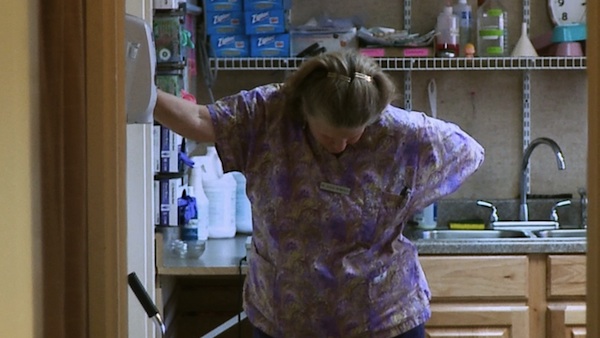After Tiller Review
There are few topics—hell, there are few words—out there that engender as much debate and blind passion as abortion. But if we can’t have a reasoned, level-headed conversation about the subject, at least we now know such a film can be made about it. After Tiller is not a fire-breathing piece of pro-choice propaganda, nor is it even a fact-based policy polemic. After Tiller is concerned with people—specifically the only four American doctors who actively perform late-term abortions. The approach gives the film a calm air, which is novel to both the subject matter and, frankly, the entire genre. It also makes After Tiller one of the year’s very best documentaries.
For the uninitiated, the “Tiller” of the film’s title is George Tiller—a late-term abortion doctor in Wichita, Kansas, who was shot and killed by an anti-abortion extremist while he was exiting church in 2009. Tiller trained and mentored most of the doctors profiled here, and even though he wasn’t intimately acquainted with all of them, their group was nonetheless tightly knit. It needed to be, for they were the only people in the country doing this kind of work, and they all face(d) serious death threats on a regular basis.
LeRoy Carhart was based on Nebraska, which, at the time of filming, was working to pass one of the most restrictive anti-abortion bills in the nation—one that would limit a woman’s right to choose at 20 weeks. Carhart thus faced a difficult choice–comply or move. He chose the latter, but struggled to find a home, as he faced massive protests in several potential new venues.
Warren Hern is in Boulder, Colorado. He thinks he’s doing good work, but the toll on his family—including his new wife and stepson and his very elderly mother (who herself faces death threats)—is a lot to handle.
Finally, there are Shelley Sella and Susan Robinson, who co-operate a clinic in Albuquerque, New Mexico. If it’s in the two men that the film depicts the public-facing toll of being late-term abortion doctors, it’s in the two women that the audience sees the more internal struggle of doing this work.
All four take us into consultations with them as they hear stories from women and families that are simply tragic. One potential mother says her fetus has a skeletal condition that makes its bones so fragile that simply being held will cause them to break. Another mother is carrying a fetus with such a severe case of mental retardation that over its life, it would know and speak a maximum of 25 different words. These aren’t women who, late into their pregnancies, are regretting their choices. These are responsible women and couples—some of whom lived anti-abortion lives until now—who are faced with choices no one ever wants to face.
Other times, however, women come in who simply aren’t equipped to be mothers. Whether it be financial reasons or some other problem, these few have made the decision to not become parents. This is among the film’s most compelling and complicated material, and it’s Robinson who’s the narrator. She talks about reserving the right to turn women away if the don’t have a compelling enough story. It’s a right she struggles with because, as pro-choice activists argue, is anyone really better equipped to make a judgment call about a woman’s life and her ability to raise a child than the woman herself? No one wants an abortion, she argues. And if they don’t receive one from one of these four doctors, what’s stopping them from trying something stupid and dangerous themselves?
Robinson ultimately settles on only turning away women when it seems like they’ll regret the abortion to the point that those feelings of regret might become dangerous to them later in life. We see her and a colleague trying to determine exactly that about a 19-year-old girl who comes in, and directors Martha Shane and Lana Wilson don’t inject an ounce of manipulation or even “cinematic-ness” into any of these scenes. They don’t need to. After Tiller—whether it’s focusing on Robinson’s or Sella’s patient consults, Hern’s struggle to maintain a work-life balance, Carhart’s sad inability to find a home, or any of the four’s personal histories—is already cinematic. Its ability to get at and present personal truths no politician, activist, or journalist has to date been able to on a scale like this make it an essential 2013 movie.
















